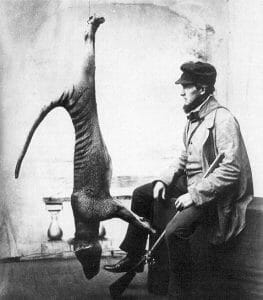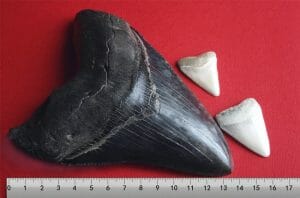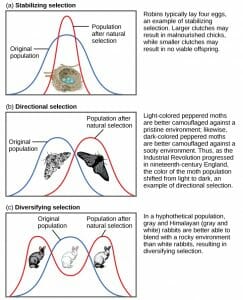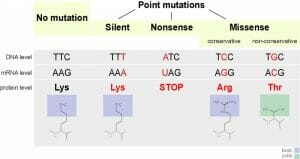Extinction Definition
Extinction is a term applied to a known species, of which there are no known living individuals. Some species which have suffered extinction are known only from their fossilized remains. Others were at one point known to humans, but are gone now. Still others suffered directly at the hands of humans, driven to extinction. An extinct species, or one that has suffered extinction, no longer contributes to the evolution of organisms, but can help us understand the relationship between extant, or living animals.
Extinction has many causes, some of which are caused directly by humans and others which are parts of natural cycles or apocalyptic events. An extinction event is when many species are driven to extinction by a particular species, natural disaster, or other phenomenon. While these mass extinctions sometimes wipe out a large majority of life, extinction itself is a continual part of evolution. Extinction happens on some scale all the time, as organisms adapt and outcompete others. It has been estimated that extinction has claimed at least 99 percent of all species that have ever lived. However, new species are also being generated through the process of speciation. As they spread, diversify, and recover the niches lost to extinction, the tree of life flourishes. However, it might flourish in a new direction.
Examples of Extinction
Thylacine
Welcome to Tasmania, mate! The year is 1800, and the island of Tasmania is overflowing with a variety of interesting marsupials. Among these is the thylacine, an apex predator resembling a mixture of a tiger and a wolf. Like other marsupials, the thylacine had an external pouch. Its newborn young, underdeveloped and tiny, would make their way to the pouch to continue developing in safety. Unfortunately for the thylacine, human expansion in Australia and Tasmania would lead to their extinction.

As seen above, the thylacine was often hunted. Thylacine were top predators, and the sheep and livestock of the new human population seemed no exception. As the human population spread on Tasmania, the competition grew fiercer, and bounties were put on the thylacine by the 1830s. Less than 100 years later, the thylacine would go extinct in the wild in 1930. While there were populations in zoos these too would die off by 1933. Thus, extinction for the thylacine was complete.
Passenger Pidgeon
Once a species that formed the vastest flocks known to man, the Passenger pigeon went extinct almost entirely at the hands of man. Before 1800, the Passenger pigeon enjoyed a range from New York to Denver, across most of the Continental United States. First described by Carl Linnaeus, the bird had been known to mankind for a long time. As the Europeans arrived in the New World, the saw the pigeon as useful and plentiful food source. At the time, hunting technology and population size would not allow for the mass harvesting of the birds, and they sustainably provided food.
Fast forward several hundred years, and man had multiplied across the North American continent. Where Native American populations were small, and more sustainable, the new colonizers needed vast resources to maintain their way of life. As such, the passenger pigeon started to see steady declines into the late 1800. By the end of the 1800s, there was a massive drop off. While bills were drafted and passed to protect the Passenger pigeon, it was too late. The biology of the Passenger pigeon made it an animal prone to gathering and flocking, driven by millions of years of evolving to escape solitary predators. This social feature of the bird which had protected it for so long, made it easy prey for human hunters. Extinction quickly ensued. By the early 1900s, the last Passenger pigeon had died in a zoo.
Megalodon
The largest known shark to ever live suffered extinction. Carcharocles megalodon, or simply Megalodon, has been identified from fossilized remains of its jaw and teeth. Possibly related to the Great White Shark, its teeth suggest it was much bigger. One of these teeth can be seen below, next to two Great White teeth.
Comparing measurements from these teeth and the jaw, scientists have estimated Megalodon to be somewhere around 60 feet long. The largest living shark currently, the whale shark, is only around 30 feet long, and even the Great White tops out at around 21 feet long. Scientific data suggests that extinction for Megalodon occurred around 2.6 million years ago. At this time, humans did not exist. It is suggested that extinction occurred because of a shift in the food supply for Megalodon as well as increased competition from other megapredators, such as early killer whales.
Interestingly, like other extinctions, there is always an air of doubt. Just because humans have not witnessed an animal thought to be extinct does not mean it is actually extinct. Extinction, in this regard, is simply a category used by the International Union for the Conservation of Nature (IUCN) and other agencies to categorize an animal thought to be extinct. For example, the black-footed ferret was thought to be extinct for several decades, until a population was found in Wyoming. Due to the unknown and vast nature of the ocean, even Megalodon is outliving its extinction. Often, claims of large sharks and attacks on boats are still attributed to Megalodon. However, no actual evidence has ever been found to refute that Megalodon suffered extinction.
Causes of Extinction
Ultimate Causes
Ultimately, every species has three “choices”. They can adapt to a situation, somehow evolving a novel or more efficient way to live. They can migrate, in the hopes that other areas will provide the resources they need with less competition. Or, as is the case for many animals, they can die. Extinction, as has been demonstrated in the fossil record, far surpasses survival for most species. While this may be seen as a negative thing, remember that extinction not only leaves new niches open to colonize, but can also be caused by a species becoming more successful. While one species may take over for a while, they usually undergo speciation into a variety of forms.
Proximate Causes
There are many more proximate causes of extinction. In mathematical terms, extinction happens any time the rate of reproduction is lower than the rate individuals are dying. This situation inevitably leads to extinction, but there are a number of factors which can drive these rates.
Predation, for example, is a major cause of extinction for many animals. Many species of fish in the Caribbean are currently threatened by the emergence of a new species, the Lionfish. Lionfish are not native to the Caribbean, and have no natural predators of their own. As such, they have pretty much free reign on the fish of the Caribbean. Many of these endemic species are being wiped out by the lionfish, and extinction is the likely result. In a similar story, extinction is plaguing many species of birds and lizards which have been exposed the brown tree snake. The snake, transported on cargo ships during WWII, has no natural predators on the islands to which is was transported. As such, the snake population has exploded and driven its prey items towards extinction, if not into it.
Other causes, which are directly the result of human action, involve habitat destruction and fragmentation. As we destroy the resources animals need to survive, we decrease the capacity an area can hold. As we further divide these areas with roads, fences, and other boundaries, we decrease the ability of species to migrate and successfully reproduce. This phenomena, as well as hunting and exploitation of animals for meat and game, has cause the extinction of a massive amount of animals. Scientists now speculate that, due to human interactions with the rest of nature, the world is entering another mass extinction event.
Quiz
1. How do we know an animal is really extinct?
A. We have no documented and confirmed sightings of the animal in recent times
B. We can never know
C. We find its fossils
2. When considering extinct organisms which do not leave good fossils, how can scientists claim to pinpoint their extinctions?
A. Voodoo Magic
B. Only organisms with fossils can be determined
C. Chemical evidence points to many extinction events
3. Scientists want to revive the Woolly Mammoth. To do so, they supposed that they could use the DNA found in a frozen male mammoth to impregnate a female elephant. Would this “reverse” extinction?
A. Yes
B. No
C. Only if the baby comes out a Mammoth
References
- Feldhamer, G. A., Drickamer, L. C., Vessey, S. H., Merritt, J. F., & Krajewski, C. (2007). Mammology: Adaptation, Diversity, Ecology (3rd ed.). Baltimore: The Johns Hopkins University Press.
- Pimiento, C., & Clements, C. (2014, October 22). When did Carcharocles megalodon become extinct? A new analysis of the fossil record. PLOS One. Retrieved from http://journals.plos.org/plosone/article?id=10.1371/journal.pone.0111086
- Pough, F. H., Janis, C. M., & Heiser, J. B. (2009). Vertebrate Life. Boston: Pearson Benjamin Cummings.
Extinction




